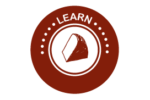Milk Quality Workshop with Gary Anderson – Thursday, October 30th at State of Maine Cheese Company – 9am to 5pm
Register for workshop here.
We will spend the day reviewing the biosynthesis of milk and udder anatomy. We will go over managed milking guidelines, milk storage, transport and evaluating milk quality. Specifically, we will cover the handling of milk from the animal to the container to maintain high quality. We will go over different milking systems and the tenets of cleaning and sanitizing milk handling equipment highlighting equipment areas for special consideration. We will finish the day reviewing lab reports, what they mean and goals for bacteria, somatic cells and adulterants. This will be a very full day of interactive discussions. Please bring a pot-luck dish to share for lunch Workshop
Sate of Maine Cheese Company, 461 Commercial Street
Rockport, ME 04846
Fee:
$35 for Maine Cheese Guild Members
$60 for non members (includes cheeseEnthusiast membership)
$105 for non-members (includes Principal/cheese producer membership)
Register for workshop here.



